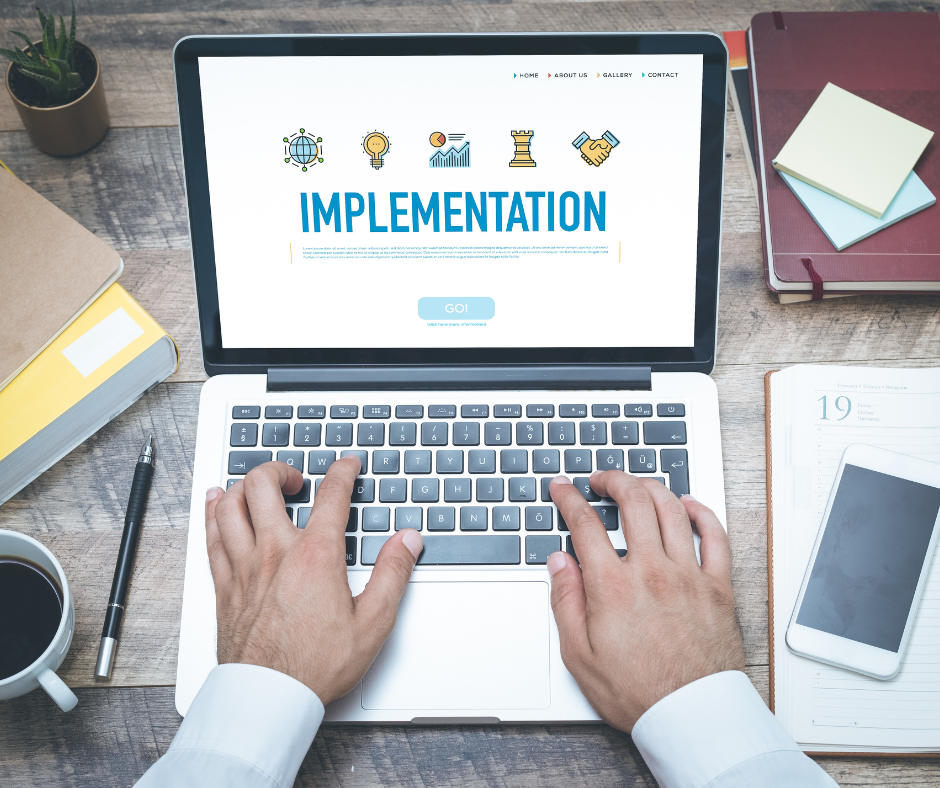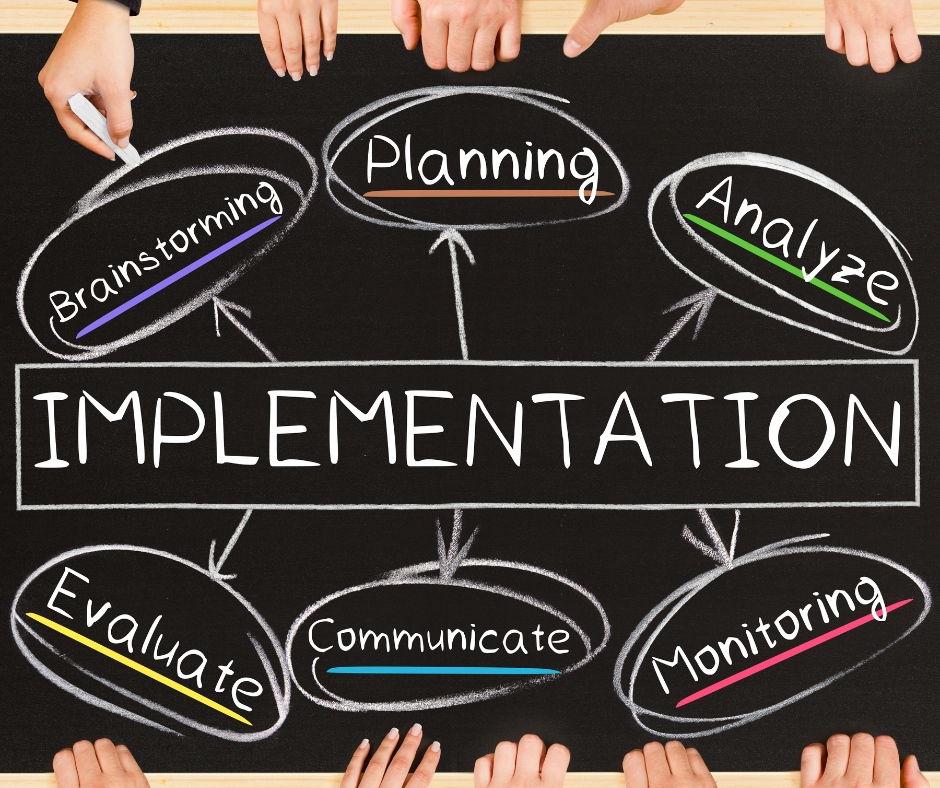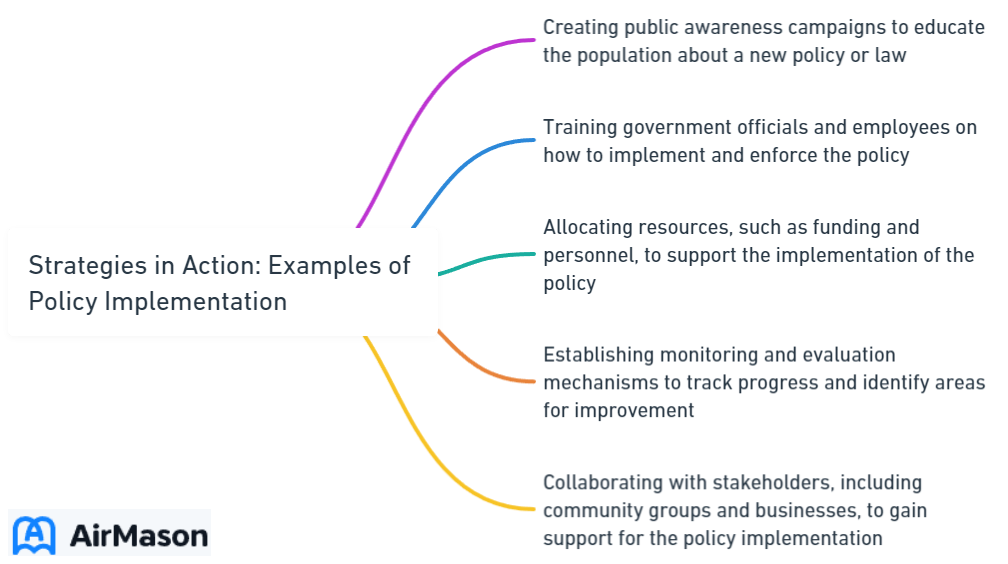
Implementing policies effectively is crucial for their success and achieving desired outcomes. Policy implementation involves translating policy objectives into concrete actions and putting them into practice. This process involves navigating various challenges and capitalizing on factors that contribute to successful implementation. In this article, we will explore the importance of effective policy implementation, examine case studies of successful implementation in areas such as universal healthcare and climate change mitigation, discuss factors that contribute to success, and analyze challenges and lessons learned from failed implementation. We will outline best practices for successful policy implementation, including robust monitoring and evaluation mechanisms, flexibility in implementation strategies, continuous stakeholder engagement, and learning from past experiences. Understanding and applying these strategies can help policymakers and practitioners effectively implement policies and achieve their intended goals.
Importance of Effective Policy Implementation
Effective policy implementation is crucial for the success and impact of any policy. Here are some key reasons why it is important:
- Achieving Policy Objectives: Effective policy implementation ensures that the intended objectives and goals of a policy are achieved. It brings the policy from theory to practice, translating ideas into tangible actions.
- Addressing Societal Issues: Policies are designed to address various societal issues, such as healthcare, education, and environmental protection. Proper implementation ensures that these issues are effectively tackled and resolved, leading to positive outcomes for individuals and communities.
- Improving Efficiency: Well-implemented policies streamline processes and improve efficiency in public and private sectors. It promotes effective resource allocation, reduces wastage, and enhances overall productivity.
- Promoting Equity and Fairness: Effective policy implementation ensures that policies are implemented equitably and fairly, without discrimination or bias. It helps in creating a just and inclusive society where everyone has equal access to opportunities and benefits.
- Enhancing Accountability: Proper implementation of policies establishes clear lines of accountability, making it easier to track progress, measure outcomes, and hold responsible parties accountable for their actions or inactions.
- Building Public Trust: When policies are effectively implemented, it instills public trust and confidence in the government or organization responsible for the policy. This trust is essential for maintaining social cohesion and legitimacy.
- Adapting to Changing Needs: Policies need to be adaptable to changing circumstances and needs. Effective implementation allows for monitoring and evaluation, enabling policymakers to make necessary adjustments and improvements based on real-time data and feedback.
- Learning and Improvement: The implementation process provides valuable insights and lessons for policymakers. It helps them understand what works and what doesn’t, facilitating learning and continuous improvement in policy design and implementation.
- Measuring Impact: Effective implementation allows for the measurement of the policy’s impact and effectiveness. This information is crucial for decision-making, resource allocation, and future policy development.
- Stakeholder Engagement: Implementation involves engaging stakeholders and fostering collaboration between different actors. This inclusivity ensures that diverse perspectives and expertise are considered, leading to more comprehensive and effective policies.
By utilizing a well-structured policy and procedure template and recognizing the importance of effective policy implementation, policymakers can ensure that their policies have the desired impact and bring about positive change in society. A well-crafted template serves as a valuable tool in creating clear guidelines and ensuring consistency in the implementation process, ultimately contributing to the success of these policies.”

Case Studies of Successful Policy Implementation
Digging into real-world examples, we turn our attention to case studies of successful policy implementation. Brace yourself for a deep dive into the tangible outcomes of strategic decision-making. We’ll kick off with an exploration of the implementation of a universal healthcare system, uncovering the impact it has had on societies. Then, we’ll shift our focus to the realm of climate change and examine the tangible results of implementing policies aimed at its mitigation. Join us as we uncover the facts, figures, and names behind these policy successes.
Example 1: Universal Healthcare System Implementation
The successful implementation of a universal healthcare system involves several key factors:
- Clear and Measurable Goals: It is crucial to establish clear objectives for the implementation of the universal healthcare system, such as providing access to affordable healthcare for all citizens.
- Adequate Resources and Funding: Sufficient financial resources must be allocated to support the implementation of the universal healthcare system, including funding for healthcare facilities, medical professionals, and necessary infrastructure.
- Stakeholder Engagement and Collaboration: Collaboration with various stakeholders, including healthcare providers, insurance companies, policymakers, and the public, is essential for the successful implementation of the universal healthcare system. It allows for gathering input, addressing concerns, and ensuring that the system meets the needs of all parties involved.
- Transparent Communication and Information Sharing: Transparent communication about the goals, benefits, and potential challenges of the implementation of the universal healthcare system is necessary to gain public support and address any misconceptions or concerns.
- Robust Monitoring and Evaluation Mechanisms: Regular monitoring and evaluation of the performance of the universal healthcare system help identify areas for improvement, measure its effectiveness, and ensure its continued success.
- Flexibility and Adaptability in Implementation Strategies: The implementation of the universal healthcare system may require adjustments and adaptations based on changing circumstances, technological advancements, and evolving healthcare needs.
- Continuous Stakeholder Engagement and Communication: Ongoing engagement with stakeholders, including healthcare professionals, policymakers, and the public, is necessary to address emerging issues, gather feedback, and maintain support for the universal healthcare system.
By considering these factors and effectively implementing a universal healthcare system, countries can work towards providing accessible and equitable healthcare for all their citizens.
Example 2: Climate Change Mitigation Policies
Climate change mitigation policies are vital in addressing the urgent issue of global warming. Here are some illustrations of these policies:
- Renewable Energy Incentives: Governments can implement policies that offer incentives for the adoption of renewable energy sources such as solar, wind, and hydro power. These incentives may include tax breaks, grants, and subsidies to encourage individuals and businesses to invest in clean energy technologies.
- Emissions Trading Systems: Also referred to as cap-and-trade systems, these policies establish a limit on greenhouse gas emissions and allow companies to buy or sell emission allowances. By creating a market for emissions, this policy stimulates businesses to reduce their emissions and invest in cleaner technologies.
- Energy Efficiency Standards: Governments can introduce regulations that set minimum energy efficiency requirements for appliances, vehicles, and buildings. This policy promotes the use of energy-efficient technologies, thereby reducing energy consumption and greenhouse gas emissions.
- Public Transportation Expansion: Investing in the expansion of public transportation networks can help decrease reliance on cars and lower greenhouse gas emissions. Policies that prioritize the development of reliable and accessible public transportation systems can encourage individuals to switch to more sustainable modes of transportation.
- Carbon Pricing: Implementing a carbon tax or carbon pricing mechanism can effectively lessen greenhouse gas emissions by assigning a monetary value to carbon dioxide emissions. This policy provides an economic incentive for businesses and individuals to reduce emissions and invest in low-carbon alternatives.
These are merely a few instances of climate change mitigation policies that can be implemented to address the challenges posed by global warming. Each policy plays a crucial role in reducing greenhouse gas emissions and promoting a more sustainable future. By implementing a combination of these policies, governments can work towards mitigating the effects of climate change and safeguarding the environment for future generations.

Factors Contributing to Successful Policy Implementation
Successful policy implementation is dependent on several key factors. In this section, we will uncover the elements that contribute to effective policy execution. We’ll explore the importance of clear and measurable goals, the role of adequate resources and funding, the significance of stakeholder engagement and collaboration, and the impact of transparent communication and information sharing. By understanding these factors, we can gain insights into how policies can be implemented more successfully, leading to positive outcomes and meaningful change.
Clear and Measurable Goals
- Specificity: Clear and measurable goals are essential for successful policy implementation. Here are some key considerations to keep in mind:
- Measurability: Goals should be clearly defined and leave no room for interpretation. This ensures that everyone involved understands what needs to be achieved.
- Relevance: Goals should be quantifiable so that progress can be tracked and evaluated. This allows policymakers to determine whether the desired outcomes are being achieved or if adjustments need to be made.
- Realistic: Goals should be directly linked to the desired outcomes of the policy. They should address the root causes of the issue being addressed and contribute to the overall objectives of the policy.
- Time-bound: Goals should be attainable within the given timeframe and with the available resources. Unrealistic goals can lead to frustration and a lack of motivation among stakeholders.
By setting clear and measurable goals, policymakers can effectively guide the implementation process and ensure that progress is being made towards the desired outcomes. This allows for better decision-making, resource allocation, and accountability throughout the policy implementation process.
Adequate Resources and Funding
When it comes to policy implementation, adequate resources and funding play a crucial role in ensuring successful outcomes. Here are some key considerations to keep in mind:
- Allocating Sufficient Budget: Adequate resources and funding must be allocated to support the implementation of the policy. This includes financial resources to cover expenses such as personnel, equipment, training, and monitoring systems.
- Securing External Funding: In some cases, securing external funding can be necessary to supplement existing resources. This could involve seeking grants or partnerships with organizations that align with the goals of the policy.
- Staff Training and Capacity Building: It is essential to invest in the training and development of staff members involved in policy implementation. This includes providing resources for skills enhancement, knowledge transfer, and capacity building programs.
- Infrastructure and Technology: Adequate resources and funding should be allocated to ensure the availability of necessary infrastructure and technology. This may include upgrading existing systems, investing in new technologies, or enhancing communication and data management capabilities.
- Monitoring and Evaluation Mechanisms: Sufficient resources should be dedicated to implementing robust monitoring and evaluation mechanisms. This ensures that progress can be effectively tracked, and any necessary adjustments can be made to improve policy outcomes.
- Engaging Stakeholders: Funding should be allocated to support stakeholder engagement and collaboration efforts. This includes conducting public consultations, organizing forums and workshops, and involving relevant stakeholders throughout the implementation process.
By prioritizing adequate resources and funding, policy implementers can enhance the likelihood of successful policy outcomes and improve the overall effectiveness of their initiatives.
Stakeholder Engagement and Collaboration
Stakeholder engagement and collaboration are crucial in the successful implementation of policies. By involving key stakeholders and fostering collaboration, policymakers can ensure that the policy meets the needs and concerns of all stakeholders involved.
Effective stakeholder engagement starts by identifying and involving relevant stakeholders from the early stages of policy development. This includes government agencies, non-governmental organizations, community groups, industry representatives, and individuals affected by the policy. Actively seeking their input and involving them in the decision-making process allows policymakers to gain valuable insights, identify potential challenges, and build support for the policy.
Collaboration among stakeholders plays a vital role in successful implementation. It facilitates the sharing of resources, expertise, and experiences, which enhances the effectiveness of the policy. Collaborative efforts can involve joint planning, coordination of activities, and regular communication to ensure that all stakeholders are aligned and working towards the same goals.
Maintaining open and transparent communication channels throughout the implementation process is essential. Regular updates, clear guidelines, and feedback mechanisms help stakeholders stay informed, engaged, and motivated to contribute to the policy’s success.
By prioritizing stakeholder engagement and fostering collaboration, policymakers can build trust, ownership, and momentum for the policy. This increases the likelihood of successful implementation and ensures that the policy reflects the diverse perspectives and interests of all stakeholders involved. After this, the next step should be figuring out how to inform staff about changes to policies and procedures, ensuring that employees are not only informed but also actively engaged in the process of policy evolution.
Research has shown that policies with strong stakeholder engagement and collaboration are more likely to achieve their intended outcomes and have a positive impact on society.
Transparent Communication and Information Sharing
Transparent communication and information sharing are essential aspects of successful policy implementation. Here are some points to consider:
1. Clear and Timely Updates: Regularly communicate policy updates and changes to all stakeholders involved, prioritizing transparent communication. Provide clear and concise information about the policy’s goals, objectives, and requirements.
2. Open Dialogue: Foster an environment of open dialogue where stakeholders can ask questions, express concerns, and provide feedback, promoting transparent communication. This ensures that everyone is well-informed and encourages collaboration.
3. Accessibility of Information: Ensure that all relevant information regarding the policy, including guidelines, procedures, and resources, is easily accessible to stakeholders, emphasizing transparent information sharing. This can be achieved through online platforms, official websites, or dedicated portals.
4. Collaborative Decision-Making: Involve stakeholders in the decision-making process to enhance transparency and promote transparent communication. Seek their input and consider their perspectives to create a sense of ownership and shared responsibility.
5. Timely and Accurate Reporting: Establish mechanisms for stakeholders to report progress, challenges, and successes related to the policy implementation. Regular reports should be shared with all stakeholders to keep them informed and maintain transparency in communication.
6. Feedback Loops: Encourage stakeholders to provide feedback on the policy implementation process, emphasizing transparent communication. This feedback should be taken into account for continuous improvement and adjustment of strategies, ensuring transparency and responsiveness.
7. Stakeholder Engagement: Actively engage stakeholders through meetings, workshops, and consultations to discuss policy-related matters, promoting transparent communication. This engagement allows for the exchange of ideas and ensures transparency in decision-making.
8. Communication Channels: Utilize various communication channels, such as newsletters, social media, and email updates, to disseminate information and engage with stakeholders. This ensures that information reaches a wider audience and promotes transparent communication.
By prioritizing transparent communication and information sharing, policy implementers can build trust, increase understanding, and foster collaboration among stakeholders. This ultimately leads to more effective policy implementation and greater chances of achieving desired outcomes.

Challenges and Lessons Learned from Failed Policy Implementation
Policy implementation is no easy feat, and in this section, we will delve into the challenges and lessons learned from failed attempts. From the lack of political will and leadership to insufficient public support and opposition, and inadequate planning and evaluation, we’ll uncover the factors that hindered successful policy implementation. Brace yourself for a closer look at the real-world obstacles that policymakers have encountered and the valuable insights we can glean from their experiences.
Lack of Political Will and Leadership
Lack of political will and leadership is a significant barrier to effective policy implementation. When policymakers lack the determination and commitment to drive forward policy initiatives, progress is hindered, and desired outcomes may not be achieved.
Without political will and leadership, policies may be delayed or remain stagnant, preventing the necessary actions from being taken to address pressing issues. This can have adverse effects on various sectors, such as public health problems like tobacco use, alcohol use, or physical inactivity, as well as fiscal sustainability and domestic legislation.
Leadership plays a crucial role in guiding and mobilizing efforts towards policy implementation. Effective leaders are proactive in setting clear and measurable goals, providing necessary resources and funding, and engaging stakeholders collaboratively. They foster transparent communication and information sharing, ensuring that all parties are aware of the policy objectives and their roles in achieving them.
When there is a lack of political will and leadership, policy implementation can falter. It is important to recognize this challenge and address it appropriately. By cultivating strong leadership and fostering political will through effective communication and engagement, the likelihood of successful policy implementation can be increased.
In history, lack of political will and leadership has been observed in various instances. For example, in the implementation of nutrition-related policies, inadequate leadership and political support often result in delays or diluted policies that fail to address the root causes of health issues. Similar challenges have been faced in implementing alcohol-related policies, where political issues and a lack of leadership can impede progress in reducing risky alcohol use.
Overcoming the lack of political will and leadership requires a collective effort from policymakers, stakeholders, and the public. By understanding the importance of political will and strong leadership, and working towards fostering it, we can pave the way for successful policy implementation and achieve desired outcomes.
Insufficient Public Support and Opposition
Insufficient public support and opposition play a crucial role in the success or failure of policy implementation. When the public does not support a policy, it becomes challenging for governments to effectively implement and enforce it.
1. Lack of awareness and understanding: Insufficient public support often stems from a lack of awareness and understanding about the policy’s purpose, benefits, and potential impacts. It is essential for policymakers to effectively communicate and educate the public about the policy’s rationale and goals.
2. Opposing interest groups: Public opposition may arise when certain interest groups perceive the policy as a threat to their own interests. These groups often mobilize public opinion against the policy, making it difficult for policymakers to garner enough support for implementation.
3. Public backlash and resistance: In some cases, the public may express their opposition through protests, demonstrations, or other forms of resistance. These displays of dissent can significantly hinder the smooth implementation of the policy and may force policymakers to reconsider or modify the policy in response to public pressure.
4. Lack of political will: Insufficient public support can also impact the political will of policymakers. If they believe that public opposition may harm their chances of re-election or damage their political standing, policymakers might hesitate or even abandon the implementation of the policy altogether.
To overcome the challenge of insufficient public support and opposition, policymakers need to invest in comprehensive public engagement strategies that prioritize transparency, open communication, and address the concerns and interests of the public. This can help build public trust and understanding, ultimately increasing the likelihood of successful policy implementation.
In our exploration of effective policy implementation, we can draw inspiration from JetBlue’s meticulous approach to their uniform policy. Just as JetBlue ensures their staff consistently represents their brand, organizations can use similar dedication to ensure their policies are consistently and effectively implemented. To delve deeper, read our article on JetBlue’s uniform policy and see how it can be applied to enhance policy implementation across various industries.
Inadequate Planning and Evaluation
Inadequate planning and evaluation can significantly impede the successful implementation of policies. Here are some key considerations to keep in mind:
- Insufficient data collection and analysis: When formulating a policy, it is essential to gather accurate and comprehensive data to fully comprehend the nature and extent of the problem the policy aims to address. Without proper data, policymakers may struggle to identify the root causes or assess the impact of the policy effectively.
- Lack of stakeholder involvement: Effective policy implementation necessitates the active participation of different stakeholders, including government officials, experts, community leaders, and affected individuals or groups. Insufficient engagement can result in resistance, lack of support, and ultimately, the failure to achieve the desired outcomes.
- Inadequate resource allocation: A common pitfall in policy implementation is the failure to allocate sufficient resources, including funding, staff, and technology. Without adequate resources, policymakers may face challenges in enforcing and monitoring compliance, rendering the implementation ineffective.
- Weak monitoring and evaluation mechanisms: Regular monitoring and evaluation are crucial for assessing the progress, effectiveness, and efficiency of policy implementation. Inadequate monitoring and evaluation can prevent policymakers from identifying and addressing any shortcomings or making necessary adjustments to enhance outcomes.
- Lack of flexibility and adaptability: Policies need to be adaptable to changing circumstances and emerging evidence. If a policy is rigid and does not accommodate new information or adjust to evolving needs, it may become ineffective or even counterproductive.
True experience: In the execution of a public health policy aimed at reducing childhood obesity rates, inadequate planning and evaluation posed significant challenges. The policy primarily focused on school-based interventions, such as improving nutrition in school meals and increasing physical education. However, there existed a lack of comprehensive data on the current dietary habits and physical activity levels of children within the targeted population. Consequently, the policy failed to address critical underlying factors contributing to childhood obesity, such as sedentary behavior outside of school hours and unhealthy eating patterns at home. Insufficient monitoring and evaluation mechanisms hindered the policymakers’ ability to assess the impact of the implemented interventions or make necessary adjustments. As a result, there was limited progress in reducing childhood obesity rates, highlighting the crucial importance of thorough planning and evaluation in policy implementation.

Best Practices for Successful Policy Implementation
When it comes to successful policy implementation, certain best practices can make all the difference. In this section, we’ll uncover the key elements that drive effective policy implementation. Get ready to dive into robust monitoring and evaluation mechanisms, the importance of flexibility and adaptability in implementation strategies, as well as the power of continuous stakeholder engagement and communication. Buckle up, because we’re about to explore some real-world examples and discover the strategies that lead to impactful policy outcomes.
Robust Monitoring and Evaluation Mechanisms
Robust monitoring and evaluation mechanisms, also known as robust monitoring and evaluation frameworks, are crucial for the successful implementation of policies. These mechanisms provide a systematic approach to assess the progress, effectiveness, and impact of policy initiatives. Here are some key aspects of these robust monitoring and evaluation mechanisms:
- Regular data collection: Robust monitoring and evaluation involve collecting data at regular intervals to track the implementation of the policy. This can include both quantitative and qualitative data. For example, policymakers can collect quantitative data on the number of policy interventions implemented, while also gathering qualitative data through stakeholder feedback.
- Performance indicators: Establishing clear and measurable performance indicators is essential for robust monitoring and evaluation. These indicators should align with the goals and objectives of the policy. For instance, if the goal is to reduce tobacco use, performance indicators could include the percentage of the population that has quit smoking or the reduction in tobacco sales.
- Evaluation frameworks: Developing evaluation frameworks is a key component of robust monitoring and evaluation mechanisms. These frameworks help in assessing the effectiveness of the policy and identifying areas for improvement. They outline the criteria and methodologies for evaluating the policy’s impact on target populations or outcomes.
- Stakeholder involvement: Engaging stakeholders throughout the monitoring and evaluation process enhances accountability and ensures a comprehensive assessment. By including stakeholders, such as experts, community representatives, and affected individuals, policymakers can gather valuable insights and perspectives that contribute to a more accurate evaluation of the policy’s implementation.
- Communication and reporting: Transparent communication and information sharing are essential for the success of robust monitoring and evaluation mechanisms. Regular reporting on progress, findings, and recommendations helps stakeholders stay informed and supports evidence-based decision-making.
By implementing these robust monitoring and evaluation mechanisms, policymakers can assess the effectiveness of their policies, make necessary adjustments, and ensure accountability in achieving the desired outcomes.
Flexibility and Adaptability in Implementation Strategies
Flexibility and adaptability are crucial factors in successful policy implementation strategies. By incorporating flexibility and adaptability in implementation strategies, the chances of achieving the desired outcomes are greatly enhanced. Here are some key points to consider when it comes to flexibility and adaptability:
- Continuous assessment and evaluation: Regularly assess the progress of the policy implementation to identify any challenges or gaps that may require adjustments. This continuous assessment and evaluation contribute to the flexibility and adaptability of the strategy, ensuring it remains effective and on track.
- Openness to change: Embrace a mindset that is open to change and willing to modify strategies if necessary. The ability to be flexible and adaptable allows for adjustments in implementation strategies, ensuring their effectiveness in achieving the desired outcomes.
- Collaborative problem-solving: Foster collaboration among different stakeholders involved in the implementation process. By working together and sharing ideas, flexibility and adaptability can be encouraged, leading to innovative solutions for addressing unforeseen circumstances or obstacles that may arise during implementation.
- Flexibility within guidelines: Provide a framework that allows for flexibility while still adhering to the overall goals and objectives of the policy. This flexibility within guidelines enables adaptation to specific contexts or circumstances without compromising the intended outcomes of the policy.
- Effective communication: Maintain clear and transparent communication channels to keep all stakeholders informed about changes or adjustments to the implementation strategy. This emphasis on effective communication contributes to the overall flexibility and adaptability of the strategy, ensuring everyone is on the same page.
Remember, flexibility and adaptability in implementation strategies are essential for navigating the dynamic and ever-changing landscape of policy implementation. By incorporating flexibility and adaptability, the chances of successful policy outcomes can be greatly enhanced.
Pro-tip: Embrace a learning mindset throughout the implementation process. Continuously evaluate the effectiveness of the strategies being employed and be willing to make necessary adjustments. This iterative approach, rooted in flexibility and adaptability, allows for continuous improvement and ensures that implementation remains on the right track.
Continuous Stakeholder Engagement and Communication
Continuous stakeholder engagement and communication are crucial aspects of successful policy implementation. By actively involving stakeholders and maintaining open lines of communication, policymakers can ensure that the policy meets the needs and concerns of all parties involved. Here are some key points to consider when it comes to continuous stakeholder engagement and communication:
- Regular meetings and consultations: Engage stakeholders through regular meetings, consultations, and workshops to gather their input, address their concerns, and keep them informed about the progress and updates of the policy implementation.
- Transparent and timely communication: Maintain transparency by sharing information about the policy design, implementation strategies, and outcomes. This helps build trust and ensures that stakeholders are aware of the rationale behind decisions and can provide feedback at every stage.
- Active listening: Actively listen to the perspectives and feedback of stakeholders. This includes considering their suggestions, addressing their concerns, and incorporating their input into the policy implementation process whenever feasible.
- Educational initiatives: Implement educational initiatives to ensure that stakeholders have a clear understanding of the policy goals, objectives, and potential benefits. This helps foster support and cooperation among stakeholders.
- Feedback mechanisms: Establish feedback mechanisms, such as surveys or online platforms, to allow stakeholders to provide feedback, report issues, and suggest improvements throughout the policy implementation process.
- Flexibility and adaptability: Be open to modifying implementation strategies based on stakeholder feedback and changing circumstances. This demonstrates a willingness to listen and adjust, which can enhance stakeholder engagement and cooperation.
By prioritizing continuous stakeholder engagement and communication, policymakers can establish a collaborative environment that encourages active involvement, fosters trust, and ultimately leads to more successful policy implementation.

Learning from Past Experiences and Mistakes
Learning from past experiences and mistakes is crucial when it comes to the implementation of policies. By examining real-life examples, we can gain valuable insights into what works and what doesn’t. Here are a few key lessons we can learn:
- Communication and Transparency: One common mistake is a lack of clear communication and transparency throughout the policy implementation process. When stakeholders are not adequately informed, misunderstandings and resistance can arise. Learning from this, it is important to establish effective communication channels and provide regular updates to all involved parties.
- Consultation and Collaboration: Another lesson is the significance of involving relevant stakeholders in the policy development and implementation process. Neglecting to engage key stakeholders can lead to overlooked perspectives and hinder successful implementation. By actively seeking input and involving stakeholders from the beginning, policies are more likely to be well-received and effectively implemented.
- Flexibility and Adaptability: Policies should be designed with flexibility in mind, as unforeseen circumstances and changing contexts can affect their success. Rigid policies that do not allow for adjustments can result in inefficiencies and unintended consequences. Learning from this, it is important to regularly review and adapt policies based on feedback and changing needs.
- Monitoring and Evaluation: A lack of effective monitoring and evaluation mechanisms can hinder policy implementation. Without proper monitoring, it is difficult to assess progress, identify challenges, and make necessary adjustments. Learning from this, it is crucial to establish robust monitoring and evaluation systems to track the implementation process and measure outcomes.
- Capacity Building: Insufficient capacity among those responsible for policy implementation can impede success. It is important to provide adequate training and resources to build the skills and knowledge necessary for effective implementation. By investing in capacity building, policies are more likely to be implemented smoothly and achieve their intended goals.
By reflecting on these lessons and learning from past experiences and mistakes, policymakers and implementers can enhance their understanding of effective policy implementation strategies. This can lead to more successful outcomes and the improvement of future policy initiatives.
Frequently Asked Questions
What is policy implementation and why is it important?
Policy implementation is the process of putting a policy into action after it has been enacted. It involves educating those affected by the policy, changing administrative operations, and monitoring and enforcing the policy. Policy implementation is important because policies will not be effective if they are not properly implemented.
Who can play a part in policy implementation?
Various people and organizations can play a part in policy implementation, depending on the level of enactment and the type of policy. Stakeholders can help by identifying and coordinating resources, supporting large-scale changes, and planning for sustainability.
How can frontline input be involved in policy implementation?
Frontline services should be involved in the policy development stage and implementation process. Their input can help ensure that the policy addresses practical considerations and is effectively delivered to citizens.
What is the Dating Matters Capacity Assessment and Planning Tool?
The Dating Matters Capacity Assessment and Planning Tool is a tool used to assess capacity for preventing teen dating violence. It can be applied to other public health problems as well.
What are some strategies for successful planning in policy implementation?
Successful planning for policy implementation includes ensuring that those involved understand the policy’s goals, documenting the inputs and resources used, and documenting the roles and responsibilities of those involved.
Why is planning for sustainability important in policy implementation?
Planning for sustainability from the start of the policy process is crucial, as resources and support may decrease after implementation. Considering long-term sustainability can help ensure the policy’s intended outcomes are achieved and maintained.
